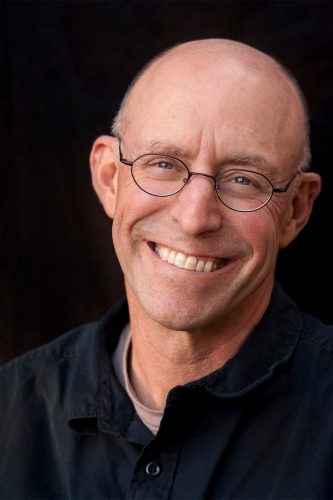
In Michael Pollan’s 2018 book How to Change Your Mind: What the New Science of Psychedelics Teaches Us About Consciousness, Dying, Addiction, Depression and Transcendence, he explores psychedelic drugs through research and personal experimentation.
To write the book, he eats mushrooms containing the psychedelic chemical psilocybin, takes tabs of LSD and smokes the venom of a toad packed with powerful drug 5-MeO-DMT — all Schedule I controlled substances.
Pollan tracks the history of psychedelics from indigenous people in Mexico eating mushrooms as a religious sacrament thousands of years ago to tie-dye-wearing hippies taking acid to free themselves from the rigid societal norms of the 1950s and modern researchers using the drugs to treat mental illnesses such as depression, addiction and PTSD.
The author, known for writing The Omnivore’s Dilemma and The Botany of Desire, is coming to the Hult Center March 5 to talk about his book and to open your mind to new ideas about psychedelic drugs.
Pollan had to open his own mind to write the book. He was skeptical of those who said psychedelics were the answer to mental illness and existential angst. The author describes himself as a staunch materialist whose journalistic bullshit detector buzzes when confronted with out-there ideas.
So he starts the book with an Emily Dickinson quote: “The soul should always stand ajar.” Pollan says he chose the quote because openness was what he needed to write the book, and what we need to be willing to read it.
Taking psychedelic drugs also tends to increase openness, one of five main personality traits identified by psychologists. Personality typically doesn’t change once you reach adulthood.
Pollan says he became more open by taking psychedelics.
“I think we get less open as we get older,” he says in an interview with Eugene Weekly. “We get kind of stuck in our ways. And we fall into these comfortable grooves of thought and behavior.”
One of the patterns Pollan followed his whole life was playing “the role of the man with the answers, the one people could depend on to explain things,” he writes.
A journalist known for tackling complex subjects, Pollan excels at explaining things. But while reaching the peak of a trip on LSD, lying down blindfolded in a psychedelic therapist’s yurt with tears streaming down his cheeks, he was able to re-examine this role and temporarily let go of it.
“If you asked my wife, she would tell you that it’s made me a more open person in the sense that I’m more tolerant of other perspectives, open to different kinds of experiences,” he says.
Pollan describes what he calls “the modern renaissance of psychedelic research,” which started in the 1990s but took off around 2006. In this movement, researchers like Roland Griffiths at Johns Hopkins University have been successfully using psychedelic drugs to break negative patterns of human thought and behavior — loops of addiction, anxiety, depression, trauma and fear.
Everybody develops habits as they get older, Pollan says, and follows them unthinkingly.
“We’re all stuck in patterns. And we’re all addicted to something, whether it’s our Twitter feed or television or shopping or drugs or sex,” he says. “It’s amazing how many of us are trapped in these loops.”
Psychedelics, he says, let us see those patterns in a new light.
“Whatever it is, whatever you’re stuck in, people suddenly see it from a new perspective. That can be very powerful — and help people break those patterns,” Pollan says.
While the book focuses on the psychedelic research renaissance, it also describes the controversial history of the drugs.
Spanish colonialists in Mexico tried to stop indigenous people from using psychedelic mushrooms. The Aztecs ate the mushrooms as a religious sacrament, calling it teonanácatl, or “flesh of the gods.” The Catholic conquistadors saw the drug as a dangerous agent of paganism.
President Richard Nixon called early LSD crusader Timothy Leary “the most dangerous man in America.” The counterculture, fueled in part by psychedelics, was making people unwilling to fight in the Vietnam war.
The CIA tried to use LSD as a truth serum, as a chemical weapon against world leaders and as a mind control agent in a clandestine operation called MK-Ultra.
Novelist Ken Kesey, a counterculture figure who led the Merry Pranksters, first tried LSD in a CIA-funded experiment. Kesey grew up in Springfield, went to the University of Oregon and became an author.
“It’s one of the bigger historical ironies, given that, in the end, Nixon had to move against the kind of thinking and behavior that the CIA may have fostered by giving that fateful dose to Ken Kesey,” Pollan says.
In Oregon, Initiative Petition 34 is aiming to license psilocybin for therapeutic use. It will be on the ballot this year if enough signatures are collected by July 2. If passed, it would signify a shift in public perspective toward psychedelic drugs — the type of mind-opening Pollan champions in his book.
Pollan says there’s a mental health crisis in the U.S., and psychedelics are a promising new tool for fighting it.
“The main thing to know is that there is a potential to treat mental illness here,” Pollan says. “That is very exciting.”
An Evening with Michael Pollan is 7:30 pm Thursday, March 5, at the Hult Center. Tickets $35-$62.50 at HultCenter.org.